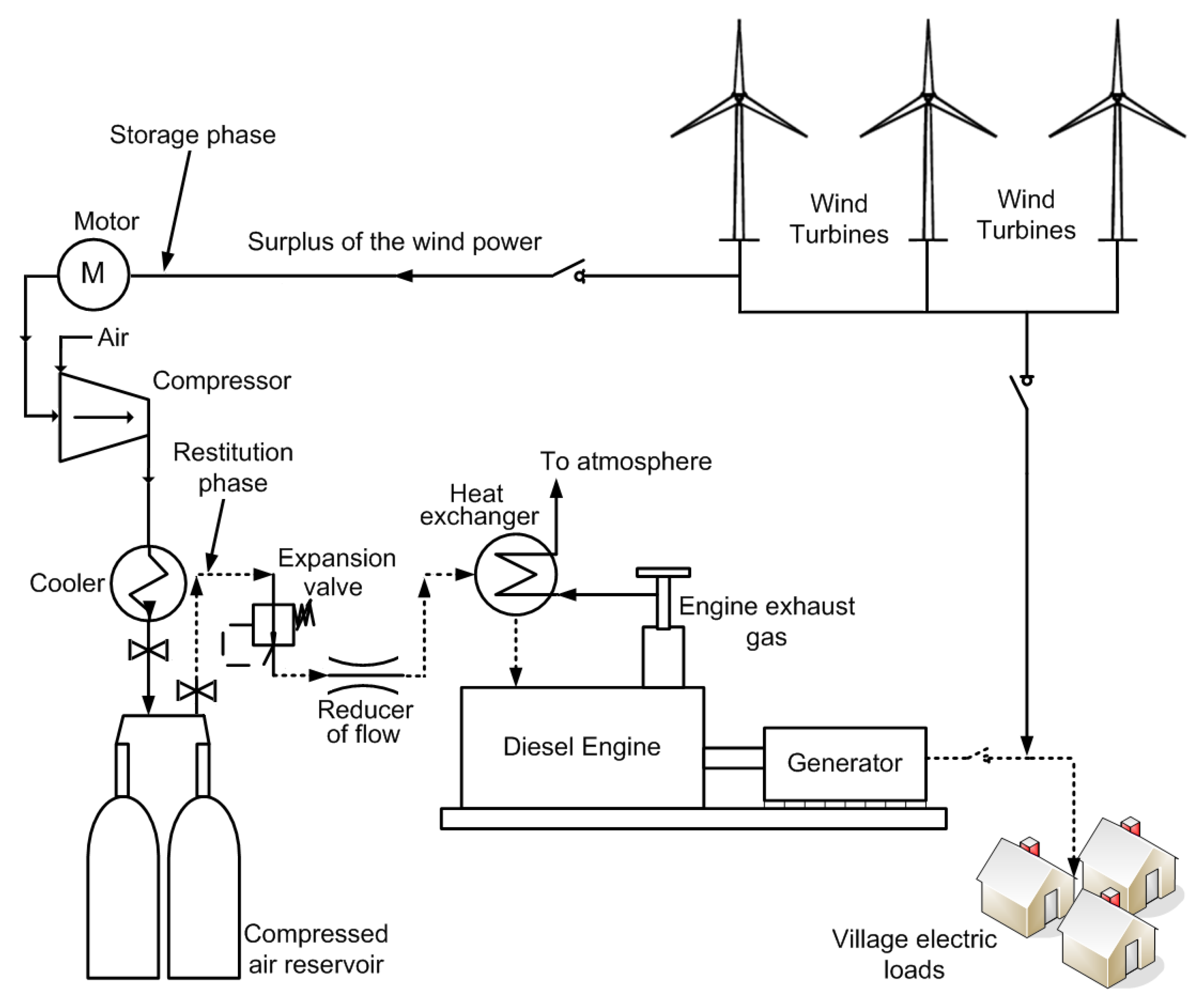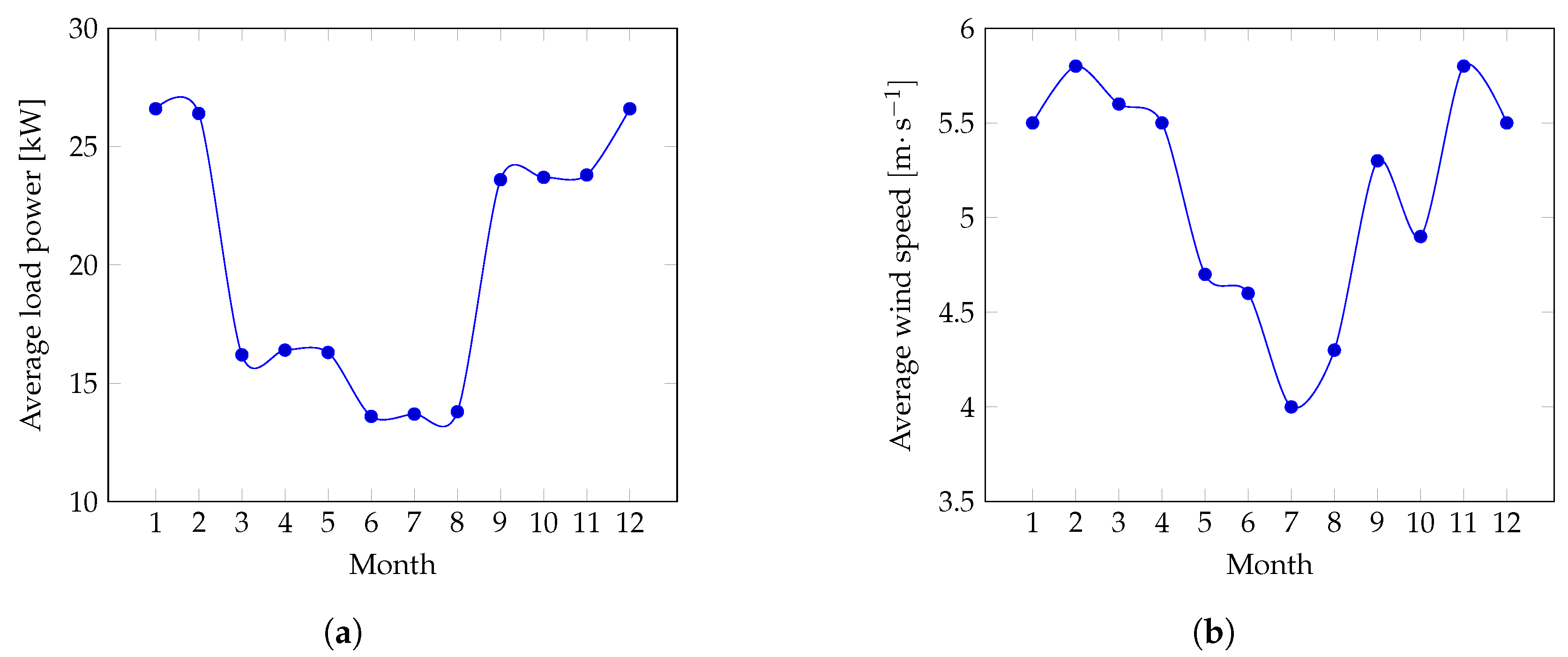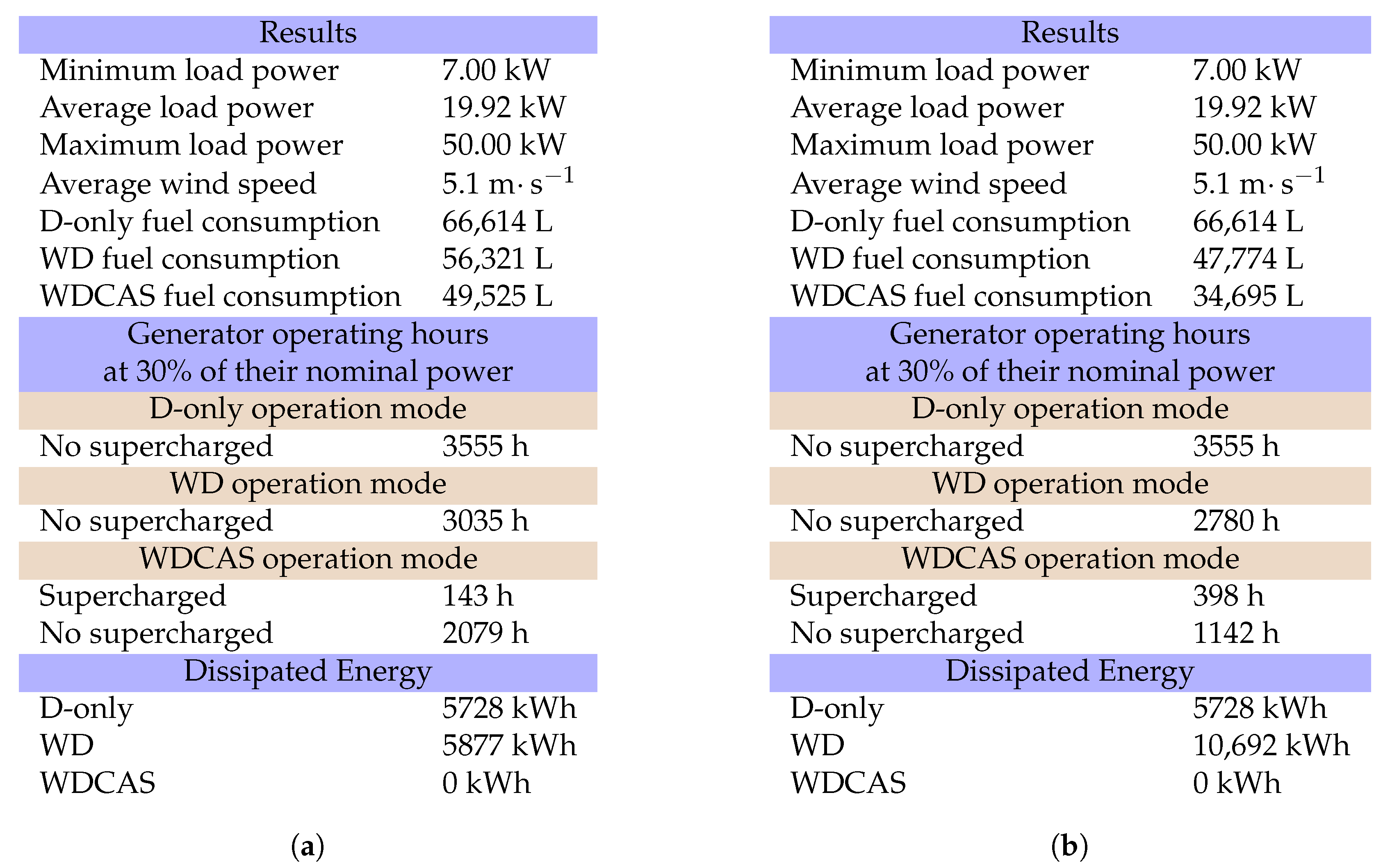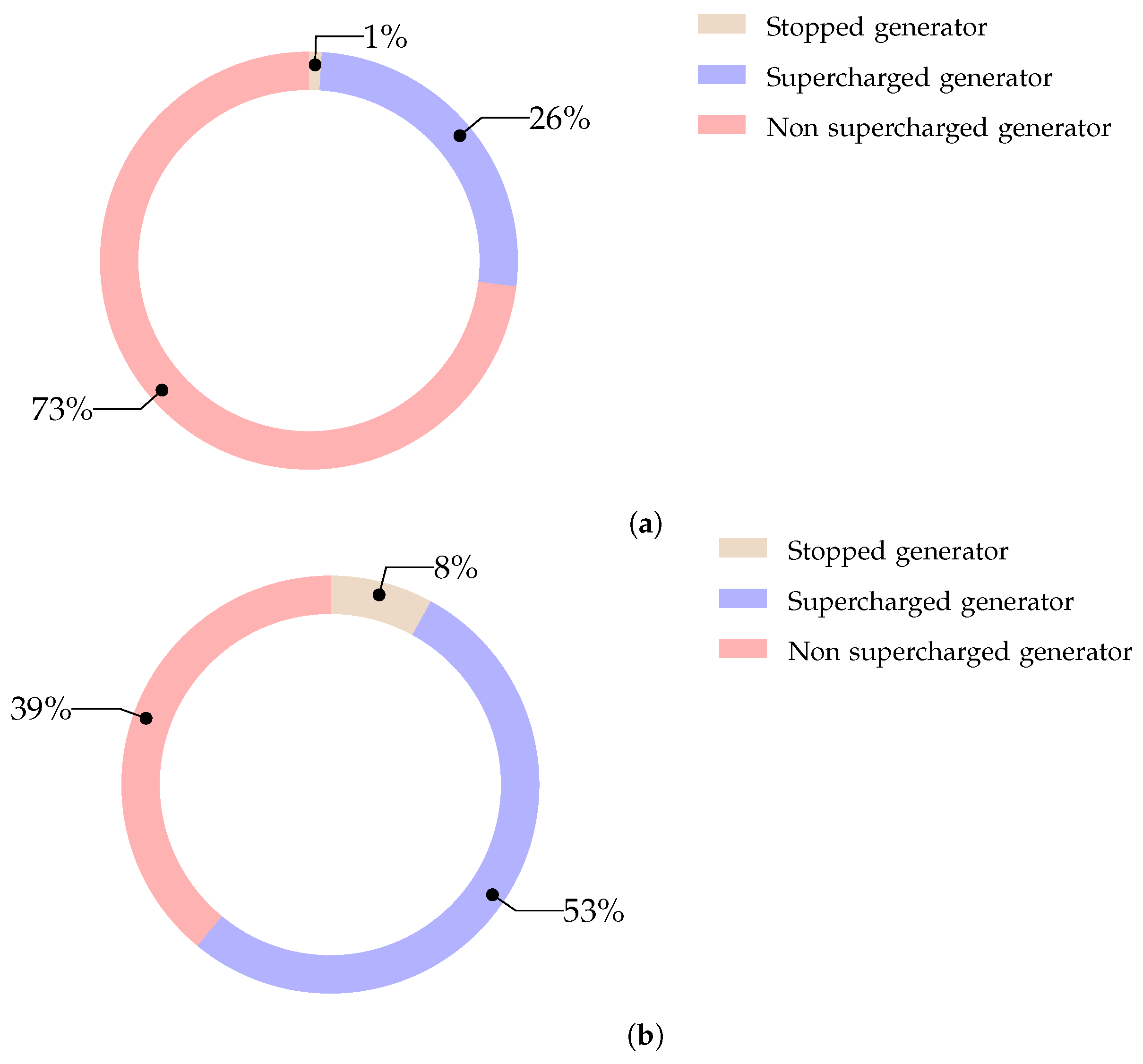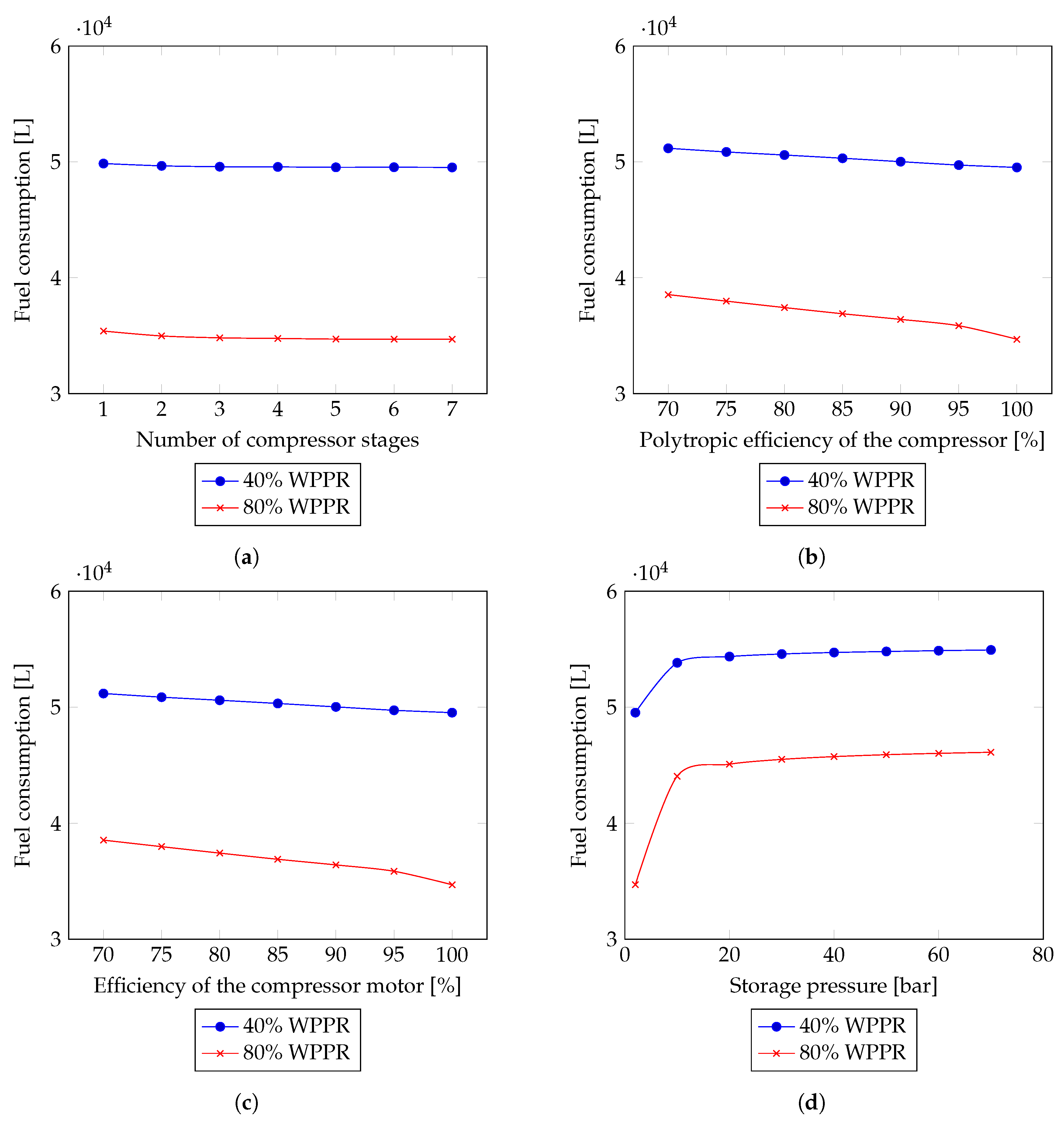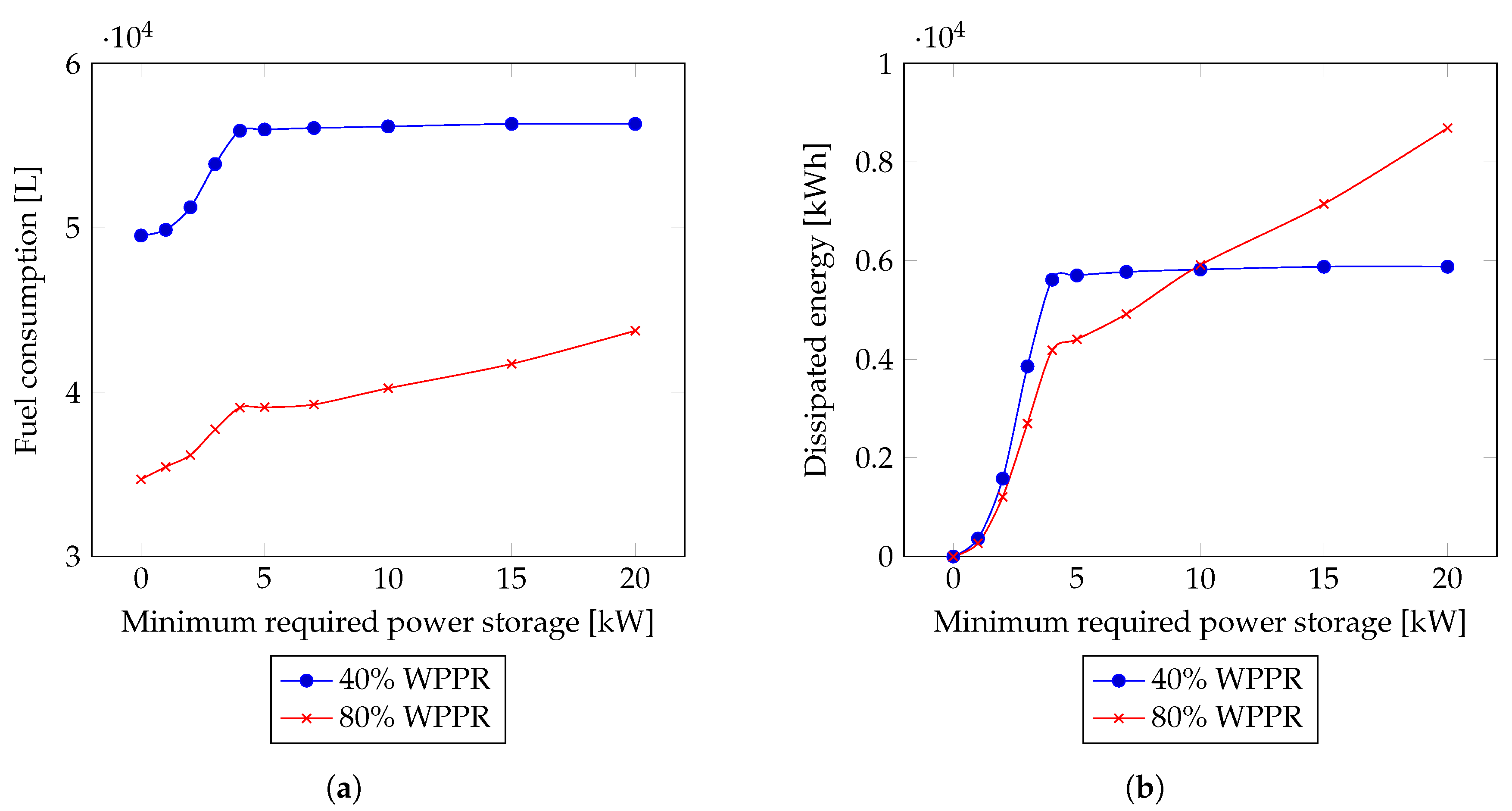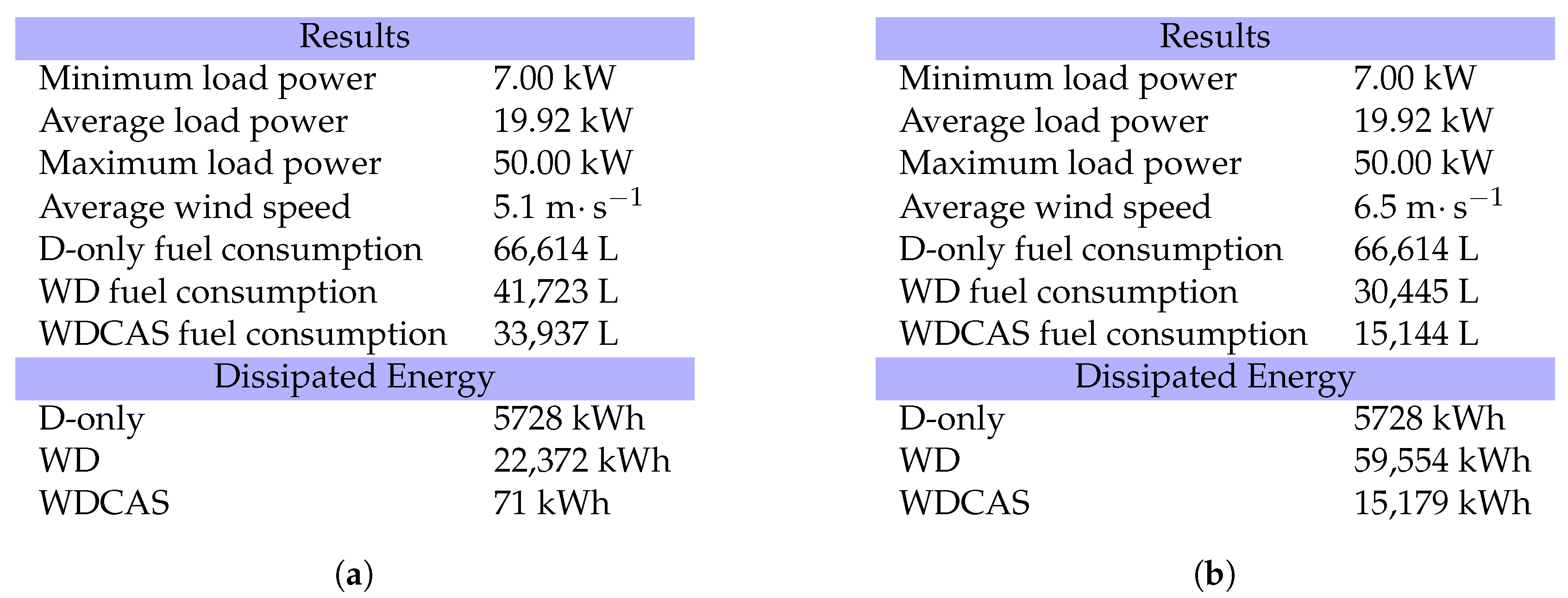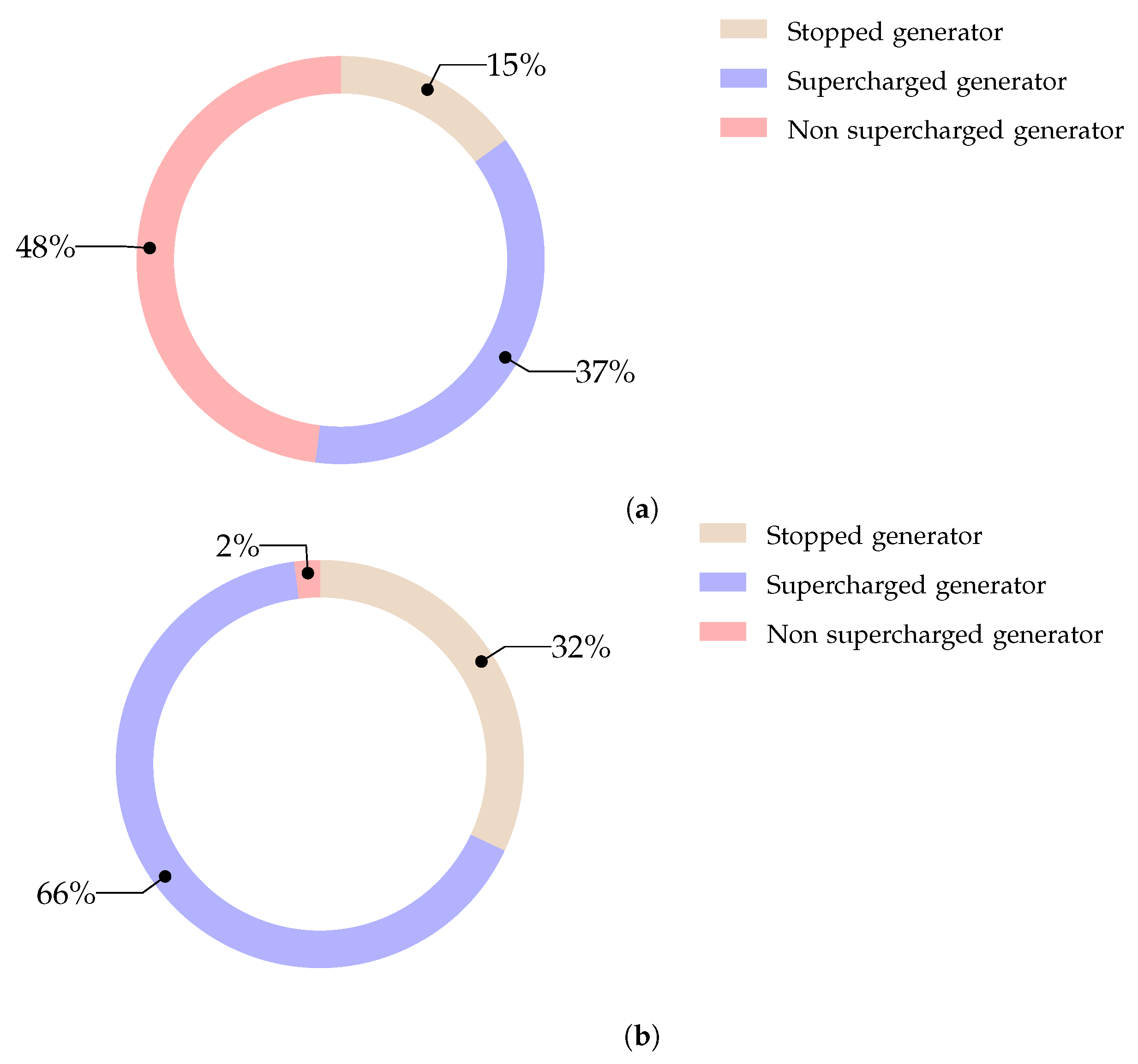3.1. WDCAS and HOMER Software Comparison Results
In this section, WDCAS and HOMER software are compared for a given wind–diesel hybrid system. WD operation mode is used to compare the accuracy of the estimations. This point is relevant since there is no software available to compare WDCAS operating mode. Indeed, HOMER does not allow simulating compressed air storage as ESS, nor diesel overcharging as operating strategy. Additional parameters like fuel consumption, diesel power generation, engine operating frequency, wind power generation and total wind energy captured by turbines were used to validate the simulation results.
Table 4 and
Table 5 summarize findings at 40% and 80% WPPR.
As shown in
Table 4, the WDCAS simulation results were very close to those obtained with HOMER software. At 40% WPPR the percentage difference is less than 10 while at 80% WPPR is about 21%. This discrepancy may be due to the operating strategies defined in the configuration phase of the system. More precisely, unlike HOMER, WDCAS software allows the use of critical threshold at diesel generator subsystem level; it was fixed at 30% of nominal power. However, in both cases the operating strategies exhibit similar behavior when compared on the total wind energy captured by turbines. Furthermore, it should be noticed that WPPR is a performance indicator directly related to fuel consumption, at 80% WPPR turns in over 5000 L fuel consumption reduction.
In
Table 5 the previous observations are confirmed. Despite a slight difference found between both software, the percent operating frequency for each diesel generator is reliable. WDCAS software has proven to be effective for model design, analysis and optimization of wind–diesel hybrid systems. Although simulation results were validated for WD operating mode, it is assumed similar accuracy will be obtained by adding CAES to the system.
3.2. WDCAS Software Validation under Ideal Conditions
In this section, the WDCAS software is used to assess the performance of a wind–diesel hybrid system with compressed air energy storage. The data presented in the case study of the
Section 2.4 is used to evaluate the feasibility of the proposed hybrid system.
Simulations are carried out under “ideal” operating conditions to determine the system performance improvements by adding CAES [
2,
18,
19]. The following assumptions characterize the operating strategy:
Assuming ideal conditions, there is not limit on the required storage capacity of the tank;
The overall power dissipated by the ESS is null, it means that the excess of power is used by the storage unit;
For an ideal compressor, the power losses are diminished since motor/compressor efficiency is 100%, as well as the mechanical losses as polytropic efficiency is 100%;
Compression performance improvement is achieved when increasing the number of compressor stages;
The compression is done under the following conditions: the outdoor air pressure is equal to 1 bar, the storage temperature is set at 20 C and the polytropic index of air at room temperature is .
In accordance with the above-mentioned points, model input parameters are presented in
Table 6. Simulation results of the proposed hybrid system operating under ideal conditions are illustrated in
Figure 3,
Figure 4,
Figure 5 and
Figure 6.
Significant improvements are obtained when adding CAES to the hybrid system. As
Figure 3 indicates, at 40% WPPR, the WDCAS requires 49,525 L of fuel comparing with 56,321 L and 66,614 L required by the wind–diesel and the diesel only operating modes, respectively. Thus, fuel savings up to 12% and 25.6% are obtained by using WDCAS instead of WD or D-only modes. Moreover, approximately 14,830 L of fuel are saved at 80% WPPR. Finally, under ideal conditions no power is dissipated and when available, the power surplus is used to compress the air in the storage tank.
Figure 4 shows that at 40% WPPR, diesel generators require about 26% of the time in supercharged mode against 73% in normal operation mode and 1% they are stopped. In contrast, at 80% WPPR, diesel generators operate about 53% of the time in supercharged mode against 39% in normal mode and 8% they are completely stopped. At 80% WPPR, diesel generators operate in supercharged mode for more than half of the time. Fuel savings up to 27% and 61% are obtained at 40% and 80% WPPR when comparing with diesel only mode.
Figure 5 shows the parameter influence on fuel consumption. As can be seen from
Figure 5a, diesel fuel consumption is gradually reduced with an increase in the number of compressor stages. The same behavior is observed for both WPPR values. However, at 80% WPPR the fuel consumption is diminished by 15,000 L. From a technical and economic perspective, the use of five stage compressor is considered optimal since the impact on fuel consumption seems not significant beyond this value.
Figure 5b shows that the fuel consumption decreases almost linearly with an increase between 70% and 100% compressor efficiency. This behavior is mathematically consistent with Equation (
13), where the power consumed by the compressor is inversely proportional to the polytropic efficiency. It should be noticed that fuel consumption significant decrease at 80% WPPR. A similar influence on fuel consumption is observed when varying the compressor motor efficiency, as shown in
Figure 5c. Currently, most of the compressors available on the market are rated at close to 95% efficiency and between 75–85% polytropic efficiency [
20]. As indicated in
Figure 5d, fuel consumption is affected by the storage pressure, more precisely by the volume of the storage tank. Thus, an increase in the storage volume (corresponding to low storage pressure) results in lower fuel consumption. Fuel consumption is negligible after a certain applied pressure. Therefore, a storage pressure between 40 and 50 bars represents a viable option, in both technical and economic terms.
Figure 6 highlights the dependency of the minimum power required to start up the compressor against to the fuel consumption and the dissipated energy. Thus, an increase on this value reflects higher fuel consumption and hence a lower level of compressed air stored. Moreover, dissipated energy originates when wind power production is insufficient to operate the compressor, when the diesel generator operates at a higher regime than required or when the ESS is full. In this case, a dump load must be added to ensure power balance according to Equation (
1).
In summary, CAES parameters have significant influence on the hybrid system performance, as their selection affects the overall fuel consumption and the power generation efficiency. Moreover, the storage pressure has an impact on the volume of the storage tank, which in turns is a techno-economic criterion for optimal sizing design.
3.3. WDCAS Software Validation
In this section, a new scenario is proposed. The influence of CAES parameters on the operating time of diesel generators is used as key criteria to assess the impact of the ESS in operation costs and GHG emissions. Data presented in
Table 3 is used for simulation. A new WPPR of 120% is considered, it corresponds to 60 kW of installed wind turbines (six turbines Bergey BWC Excel-S—10 kW). WDCAS performance is analyzed as function of average wind speed at
and
.
Table 7 summarizes the input parameters used to study WDCAS performance. Simulation results of the proposed scenario are presented in
Figure 7,
Figure 8 and
Figure 9.
Figure 7 compares the obtained results from the proposed scenario, wherein the WPPR is fixed at 120% and the average wind speed is variable. In WDCAS operating mode with an average wind speed of
, the hybrid system requires 33,937 L of fuel comparing with 41,723 L and 66,614 L required by the wind–diesel and the diesel only operating modes, respectively. Thus, fuel savings up to 18.7% and 49.1% are obtained by using WDCAS instead of WD or D-only operation modes. Moreover, the hybrid system at an average wind speed equal to
requires 15,144 L, 30,445 L and 66,614 L to operate in WDCAS, WD and diesel only operation modes. Hence, 50.3% and 77.3% of fuel savings are obtained by adding the ESS. In both cases, the used of CAES exhibits a significant reduction of dissipated power. However, the WPPR in conjunction with the high growth rate of the dissipated energy suggests an insufficient storage volume at an average wind speed of
.
A comparison of the diesel generators operating time, in hours, versus the different operating modes is shown in
Figure 8. In this case, most of the time two generators out of the five installed are suitable to provide the required power balance. It is also possible to eliminate at least one diesel generator in each case.
The previous results reveal the impact of the average wind speed and the WPPR on fuel economy and system efficiency. In places where the average wind speed is not high enough and the WPPR is low, the implementation of CAES is not suitable.
Figure 9 illustrates the time of use of the diesel generator for each operating mode. At 120% WPPR, the diesel generator operates in supercharged mode 37% and 66% of the time for an average wind speed of
and
, respectively. When the wind power produced exceeds the load demand, the diesel generators are stopped about 15% and 32% of the time.
